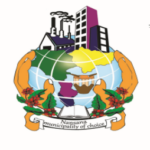Nansana, Uganda
Learn more about Nansana's food system below
City overview
Nansana Municipality, located in the Kampala Metropolitan Area, consists of 4 divisions and 29 administrative units (wards), covering approximately 293.63 km². Its administrative structure features political leadership led by the Mayor and technical management headed by the Town Clerk. The population is projected at 437,000, with 78.8% aged 0-30 years and around 112,051 households (NMC MDP 2020-2025). The landscape ranges from 900 to 1,340 meters above sea level and is characterised by isolated flat-topped hills with gentle slopes. Urban agriculture is primarily rain-fed, with bi-modal rainfall occurring in two wet seasons: April to May and October to November, averaging 1,320 mm annually. Urbanisation in Nansana is attributed to the economic impact of the Gulu and Hoima highways, along with an influx of migrants from the Luwero Triangle due to the guerrilla war in the mid-1980s. The municipality is mainly hilly compared to other areas in the Wakiso district.
Status of food and nutrition security
74% of Nansana Municipality’s population is food secure. 49% access food from the market, 15% rely on their own production, and 36% use both sources. Food in the municipality is primarily transported by road, resulting in high market prices that are often unaffordable for the urban poor living in slums, leading to chronic food insecurity. Malnutrition among children in these areas is a serious issue, driven by poverty, dry spells, and inadequate extension services. While food is available, access is limited by low incomes, poor storage practices, and a lack of nutritional awareness. Cultural preferences and food wastage during harvest further exacerbate the problem. Significant food loss occurs in markets and gardens due to inadequate cold chain storage and distribution systems. Additionally, there is a rising prevalence of overweight, obesity, and diet-related diseases due to shifts toward processed foods and sedentary lifestyles, compounded by unregulated food advertising and insufficient food and nutrition education.
Food systems policies and programmes
The municipality currently lacks specific programmes focused solely on food security. However, it is implementing a Parish Development Model program that targets 29 wards. This initiative allocates 30% of its funds to support women, youth, the elderly, and people with disabilities, providing financial assistance directly to individuals.

Challenges
General food and nutritional insecurity
Infant and children malnutrition,
Obesity and dietary related diseases,
Food loss and waste-Livelihoods and unemployment
Strengths
Management of local food markets
Food safety & sanitation (including safe water),
Urban agriculture and land use
Climate change mitigation and resilience to extreme weather events
Addressing corruption and poor governance practices
Successful initiatives
Successful initiatives include the management of local food markets, improvements in food safety and sanitation (including access to safe water), and efforts to address corruption and poor governance. The AfriFOODlinks project will help develop a supply chain system connecting producers and buyers, contributing to improved food quality. Additionally, the project aims to foster networking with civil society organisations (CSOs) and NGOs focused on food safety in the municipality. It will also work on building the capacity of existing farmer groups in food safety best practices.
Ambitions and targets in terms of sustainability of the food system
The city hopes to establish a comprehensive land use policy to protect agricultural land and create regulations for food harvesting and storage. It envisions implementing zoning for food production and increasing budget support for community mobilisation and awareness initiatives. Additionally, the city hopes to connect farmers with existing markets to enhance food accessibility and security.

